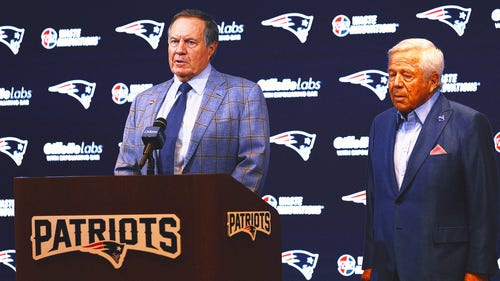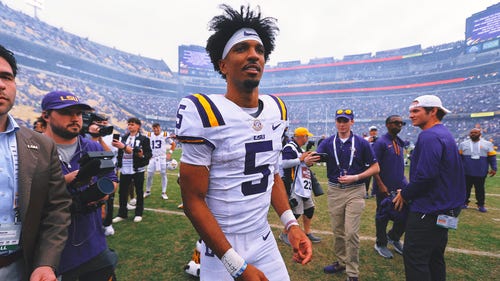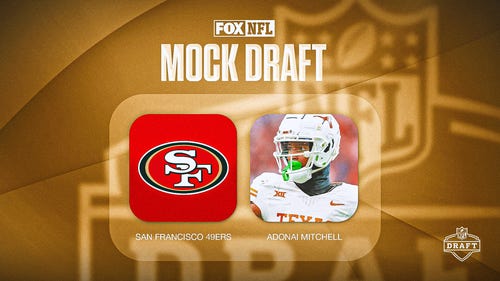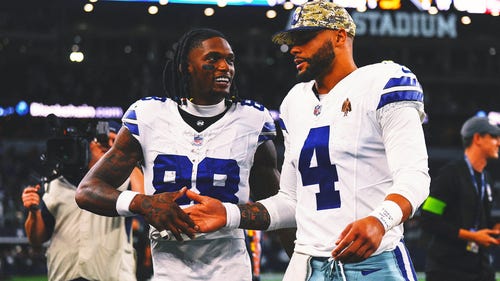
Drafting NFL players an inexact science
As I entered the grand ballroom of Radio City Music Hall for the 2008 NFL draft, I felt like I was walking into the Temple in Capernaum.
The place reeked of money.
Like most coaches, I had never been to the NFL draft. By the time I had come into the league in 1992, the day had long since passed when teams actually convened to conduct the “Annual Selection Meeting” in person.
In today’s NFL, the team’s owner, coaches and personnel people are all huddled in their respective “war rooms” in their local facility, while sending some ceremonial team representative to New York City to sit by the phone hour after hour, awaiting directions on which name to put on a card to turn in for their selection.
Standing in the midst of it all, I had the same recurring thought: This is so not about football. Between the players, agents, league personnel, marketers, ad agency people, lawyers, posses and fans, it was more spectacle than working environment.
The fact is the draft, with today’s technology and communications capability, could probably be done in about two hours. But why do that when you can televise the spectacle, turn it into a two-day viewing bonanza and draw TV ratings that far exceed the actual NBA and NHL playoff games that compete with it? The 2008 NFL draft on ESPN outdrew the NBA playoff game between the Suns and Spurs that same week.
And why not? It has the minute-by-minute suspense of “24”, the “Who Wants to Be A Millionaire?” storyline of instant riches, and the reality television squeamishness that comes when a highly-regarded prospect sits and waits . . . and waits . . . and waits for his name to be called, as Aaron Rodgers did in 2005 and Brady Quinn in 2007.
It’s been 60 years since the Los Angeles Rams hired a man named Eddie Kotal to be the first traveling scout in professional football. Since then, the area of personnel evaluation has changed dramatically.
It’s not uncommon for a team to have 15 to 20 full-time employees in their football personnel department. Scouting players isn’t just a department; it’s become an industry.
The teams that have had the most success in drafting over the past few years — the Colts, Patriots, Chargers, Titans and Ravens — seem to have done a good job drawing from the two main scouting trees that emerged from the maturation of the scouting process in the 1970s and '80s.
Many of the most successful teams have their roots in the Cleveland Browns’ staff of the early '90s. Those teams were coached by Bill Belichick, with a personnel staff that included Dom Anile, Ozzie Newsome, Phil Savage, Eric DeCosta, Scott Pioli and others.
You would think that the process and the chain of command throughout the NFL would be more uniform. The fact of the matter is that each club has its own proprietary way of getting the job done.
Bill Walsh in the 1980s and Jimmy Johnson-Jerry Jones in the '90s built dynasties partly through understanding that they could help themselves with quantity if they understood not only what sort of players they needed, but how the rest of the league valued those players.
Belichick, the coach, and Indianapolis' Bill Polian, the general manager, both rule with iron wills and total authority, and both will let you know it if you somehow are mistaken in thinking otherwise.
Baltimore Ravens general manager Ozzie Newsome, as good a procurer of talent as there is, has a more eclectic approach and is masterful at getting all the input he can from coaches and scouts alike. No matter the structure, the coach and the person who has final say on personnel must be on the same page.
Because of his experience as a Hall of Fame player, a scout and a coach, I always knew that Ozzie understood what I was experiencing, good or bad. Because he was a Hall of Fame player, I knew Ozzie was never in competition with me for the respect of the team or the organization.
I always said that with Ozzie’s ‘zero’ ego and my exaggerated one, we balanced each other out. That’s a good thing, because at the end of the day ego will foul up a selection process as quickly as anything.
Teams that can remain calm, yet flexible, on draft day get things done. Teams that fall in love with one player then panic when they don’t get him, or don’t account for the possibility that they’ll have an offer to move up or down in the draft, rarely wind up ahead of the game.
One of the wildest draft days I remember came in 2003. The Ravens knew they needed a quarterback — we’d gone as far as we could with retreads and castoffs, even winning a Super Bowl. But we needed to build the team around a reliable starter for the future. But we also had other pressing needs.
After debating for a while with Marvin Lewis, my old defensive coordinator for our Super Bowl team and then head coach of the Cincinnati Bengals, he made Carson Palmer the first pick of the 2003 draft.
As the picks clicked off, Ozzie made a run at moving up from the 10th pick and getting Byron Leftwich, who was higher on our board than Kyle Boller.
Ozzie knew that James “Shack” Harris, the general manager for the Jacksonville Jaguars and our former director of pro personnel, was going to take Leftwich with the eighth pick of the draft, two spots in front of us.
Ozzie started working the phones with Minnesota, which had the seventh overall pick, and wanted to move back. It looked like we had a deal, until Jacksonville — knowing we were trying to move up, engaged Minnesota with the same talks, offering to move up one pick to ensure Leftwich.
As the clock clicked down Minnesota got greedy and kept playing one side against the other.
Ozzie had a hard and fast rule that no trade could get done in time with less than two minutes on the clock, and we were approaching that quickly. Mike Tice, my former line coach when I was with the Vikings, and was — at the time — Minnesota’s head coach, was working the deal.
I finally pulled the phone from Ozzie and said, “Mike, you have to pull the trigger on this one way or the other because we are running out of time. Decide!”
Once Ozzie got the phone back he was able to get the deal done, but knew we were probably out of time. It is the protocol of the draft that the team getting the pick is responsible for phoning in the deal. As we quickly dialed the league number, it was busy — as were the secondary numbers we had.
Ozzie knew this was not going to get done. To this day I believe that Shack masterfully stretched the conversation out so as to get his player and not have to give anything up in the process.
Quickly, Ozzie told our man at the draft to write two names on two different cards: Byron Leftwich and Terrell Suggs. Through all of this, we were amazed that Suggs had fallen down the board.
During our ramp up to the draft I can remember Ozzie on several occasions when we would “read our players” to rank on the board Ozzie said, “We will do Suggs but it is a waste of time. He is never going to get past the fourth or fifth pick.”
The board already had yielded some surprises: After Palmer, the next two players taken were wide receivers, Charles Rogers by the Lions and Andre Johnson by the Texans.
After Dewayne Robertson and Terence Newman went, the Saints drafted next (right before Minnesota) and chose Johnathan Sullivan, a defensive tackle from Georgia who was a bust and would be out of the league in three years. The Saints would rue that selection for years, as four of the next five players taken would be Pro Bowl players.
If your time allotment during the draft lapses, the next team has the right to turn in its pick until the original team drafting in that spot does so. The time elapsed on Minnesota, and Jacksonville turned in its card on Leftwich.
Watching this transpire, the next team — with the ninth pick — was Carolina, and fearful that Minnesota could jump back in at any time, the Panthers had their pick of Jordon Gross ready to go. Gross was the highest rated offensive tackle on the board and the Panthers had made no secret of their coveting him.
Now we were on the clock, but again, Minnesota could jump in at any time. Ozzie was yelling on the phone to turn in the card, fearful that Minnesota had regrouped and would pick Suggs. Minnesota had, but instead chose Kevin Williams, who became an All-Pro defensive tackle.
We wound up with Suggs, a player we thought was worthy of the third or fourth pick of the draft and would become one of the premier pass rushers in the league.
Normally, the room would have erupted in our good fortune, but it immediately went to work trying to trade back up into the first round to the final premier quarterback remaining, Kyle Boller.
Phil Savage had done his homework and was prepared, in the event a player like Suggs had fallen down the board and would prevent us from taking Boller, who was the 10th-rated player on our board. We would later get him.
In a couple of workouts leading up to the draft Suggs had not run well, particularly in the 40-yard dash. Suggs had one of the most explosive and powerful get-offs we had ever seen and Rex Ryan was drooling over the prospect of getting a player like Suggs.
One of the first questions I fielded after we drafted Suggs was a query about his slow 40-yard-dash time.
“Well, if the quarterback takes a 40-yard-drop,” I said, “we may be in trouble.”















































































































































